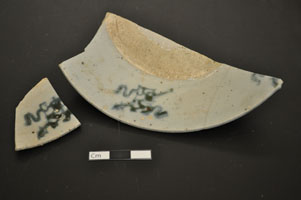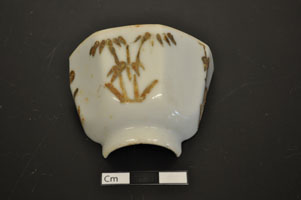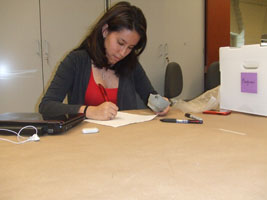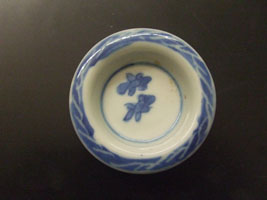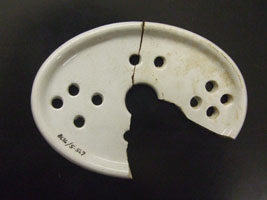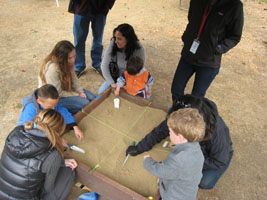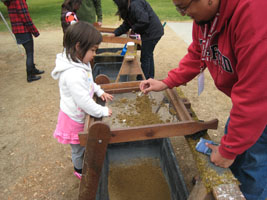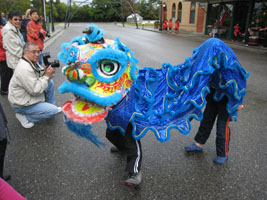In Spring 2011, the student interns cataloged some unusual ceramic artifacts. All three of the ceramic vessels featured here are (so far) unique in the collection. We’ve carefully reviewed our extensive reference library, but we haven’t yet found any sources that would help us classify these specimens. So we are posting pictures of them here in hopes that you might be able to assist us! The first specimen is an oval-shaped British whiteware flat dish with perforations. Could this be a soap dish? Or could the larger central hole suggest that it was originally part of a specialized cooking vessel, like a steamer or strainer?
The second specimen pictured here is an Asian rice bowl manufactured from porcelaneous stoneware, with a partial glaze on both the interior and the exterior. We have several specimens like this, each with four identical hand-painted squiggly icons. Does this decorative motif have a common name? What does this symbol represent?
Featured Artifact
Finally, we came across this eight-sided cup made from Asian porcelain, with an overglaze decoration. We have not seen this motif before. Is it a stand of bamboo? palm trees? grasses and flowers? Thanks for any suggestions you might have! You can post comments below or email Barb Voss (bvoss@stanford.edu).

